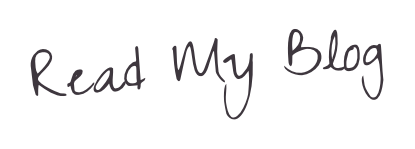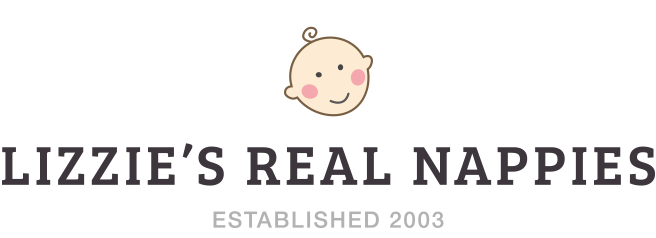There is, sadly, still the belief that washing real nappies is a major chore. For past generations washing cloth nappies tended to mean soaking in bleach, boiling on the hob and lines of nappies on the line.
Well things have changed!
There's no getting away from the fact that reusable nappies need to be washed but it's considerably easier than you might imagine and you will, very quickly, get into a routine.
Many of the nappies on our website have laundry instructions detailed on their labels and packaging but here's more general advice on how to look after your nappies.
Do I need to prewash my nappies?
Yes. All new reusable nappies should be washed before use to increase their absorbency. Like new towels, new nappies need to be washed through a few times to fluff them up and improve their absorbency. If baby wets in a brand new nappy the wetness will simply run off the surface rather than soaking in.
A nappy made of natural fibres (bamboo, cotton, terry towelling) will reach its maximum absorbency after about 3-4 washes, hemp may take 6-8 washes. There is no need to dry the nappies between washes.
Nappies made of man-made fabrics such as microfibre can be washed just once before first use.
Wash deep coloured nappies and white nappies separately for the first 1-2 washes to avoid colour run.
Please bear in mind that nappies cannot be returned once they have been washed.
OK, it's nappy change time. What do I do?
A lot of people use 'liners' inside their nappies to protect the nappy from the worst of the poo. You have the option to use disposable liners or washable liners. When starting out with cloth nappies, disposable liners are the easiest option but you're likely to find that, after a short while, you'll switch over to washable liners.
If you are using disposable liners in your nappies you can remove the liner and dispose of (preferably in the bin rather than flushed down the toilet- see Lizzie's blog on fatbergs). The nappy is now ready to be stored in a nappy bucket (or waterproof bag) ready for the next wash.
OK, what next? How do I store dirty nappies before washing?
Once the solids have been removed, dirty nappies will need to be stored in a lidded nappy bucket (or in a waterproof nappy bag) ready for the next wash.
You'll generally need to wash every 2-3 days but this will depend on how many nappies you are going through each day. If you have a newborn, using reusable nappies full time, you will probably need to wash around every day and a half. As baby gets older you won't need to change nappies so frequently and so you'll probably only need to wash once every 3 days.
Nowadays there is no need to soak your nappies; just place them in the bucket (or bag) and store them there, dry, until you're ready to wash. If you're using a bucket, a mesh bag will be a great help when transferring the nappies to the washing machine.
I'm now ready to wash. How do I wash my cloth nappies?
- When you are ready to wash (generally when the nappy bucket is full or after a maximum of 3 days), place the nappies in the washing machine. A mesh bag contained within the bucket will make transferring the nappies easier - but make sure that the bag is left open so that the nappies can be released into the wash! Don't over-fill your washing machine - 3/4 full is about right so that your nappies have plenty of room for a good wash.
- Washing instructions can differ for different nappies, and people often follow their own system but, as a rule, it's good practice to prewash the nappies on a cold cycle, and then do a proper wash.
- Generally a 40-60 degree wash is recommended (see instructions on the label for more detail) but most people do a 40 degree wash with just the occasional 60. Beware of 'baby' wash cycles - in some machines this is a 90 degree wash and is not suitable for nappies.
- Use non-biological washing powder. You will only need a small amount of washing powder (around half of the recommended dose). Using too much detergent can lead to a build-up which will affect the absorbency of the nappies, can damage elastication and waterproofing and can lead to smelly nappies (as any detergent residue can hold on to smells). Liquids and gels are best avoided as they leave a residue on the fabric which can affect the absorbency and waterproofing.
- You also need to bear in mind that you need a lot of water to flush the nappies through properly and remove the detergent at the end of the wash. We therefore suggest that you avoid short 'eco'-washes. The nappies are best pre-rinsed and then put on a long 2 hour cycle where they'll be rinsed through several times. Modern machines are generally very water efficient, which is good in most cases, but nappies need a lot of water to flush them through so check your machines settings and use a setting that uses lots of water. Don't over-fill your machine as this will also limit the rinsing.
- If you can see soap suds in the machine during the final rinse, or if, when you remove them from the machine, they smell strongly of washing powder, then you have used too much powder and need to cut down on the amount of detergent you use.
- You should avoid fabric conditioner when washing real nappies, as this can affect the absorbency of the nappies and may lead to skin irritations.
- You can place other washing in with the nappies to avoid operating the machine on a half load. Include sheets, babygros etc in the wash.
- If your real nappies have aplix (velcro), it is important to fold the tabs back on themselves, otherwise the nappies will stick to each other and to other garments in the wash.
- Always wash according to manufacturer washing instructions.
How do I clean my waterproof wraps / covers?
Some nappy systems have seperate waterproof covers. This is where the absorbent nappy and the waterproof cover come as 2 seperate items (as oppose to 'all-in-one' or 'pocket' nappies where the waterproof part is sewn in) These covers do not have to be washed after every use. Unless a nappy has become very wet, or the wrap has become soiled, it should only need changing after every 2-3 uses. Most wraps can be washed in the machine at a maximum of 60°C, although wherever possible it is best to wash on a cooler temperature or by hand as continued machine washing will accelerate deterioration of the fabric.
Wraps dry quickly and are best dried naturally. To avoid damaging the waterproof coating, avoid hanging them directly on radiators and do not wring them.
See manufacturers instructions.
How do I dry real nappies?
Reusable nappies can be dried either on the line, in a tumble drier, over an airer or in the airing cupboard.
Line drying: the cheapest and most environmentally friendly option is to dry cloth nappies on the line. This will maximise the life of your nappies, while the sunshine will deodorise, sanitise and naturally bleach your nappies. Sunshine is amazing for removing any staining! If you do not have a tumble dryer (or want to minimise the use of one) it's worth considering quick-drying nappies such as BumGenius V5, FLIP stay-dry, or Tots Bots Peenut etc. During the winter months nappies can be dried in airing cupboards, on free-standing airers or airers that hang from radiators. It is not advisable to hang nappies directly on radiators as this can scorch and thus damage the fabric.
Tumble drying: Dry on a low-medium heat according to instructions on the label. Try to avoid drying nappies (especially bamboo nappies) on a high heat as it can alter the texture of the fabric. Waterproof wraps (and nappies with a built-in waterproof layer) should not be put in a tumble dryer as this can damage the waterproofing.
Always ensure that nappies are thoroughly dry before being stored away.
What do I do if my reusable nappies get smelly?
Smelly nappies are only rarely an issue, but if your nappies suffer from it you’ll know about it!
The sharp ammonia smell is, in the main, as a consequence of teething. When teething, wee tends to become more acidic and can result in the build up of ammonia in the nappies.
If you're using too much washing powder this can lead to a build-up of detergent in the nappies that can 'soak up' this smell.
It’s likely to only be a temporary thing but it can last a few weeks and can come back during future teething periods, so here’s what you can do about it:
- Give the nappies a cool wash before giving them their main wash. High temperatures can seal the smells in, so it’s a good idea to wash them on a cool setting first.
- Cut right back on washing powder. A build-up of detergent can lead to a build-up of smells, so limit the detergent to about 1 tablespoon per wash - no more. If there are still soap suds in the wash during the final spin you have put too much powder in and need to cut down further.
- Get the nappies out on the washing line as much as you can. It actually helps to leave them out in the rain once in a while!
For most people, the smelly nappy issue will disappear within a couple of weeks.

